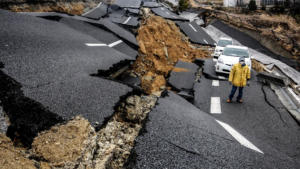What is wind?
The moving air which is caused due to the differences in air pressure in the atmosphere is called wind. Wind flows from high air pressure to low air pressure areas which balances the disparities in air pressure. The pressure difference is directly proportional to the speed of wind which means the more significant the pressure difference of windows the faster the wind flows.
The wind is classified into three categories
- Primary Wind
- Secondary wind
- Tertiary wind
Buy Prime Test Series for all Banking, SSC, Insurance & other exams
Wind: classification
- Primary or Planetary wind- The wind that flows throughout the year in a particular direction is called Primary or planetary wind. This type of wind is also known as prevailing wind. The primary wind has also different types which are known as trade winds westerlies and easterlies.
- Secondary or periodic wind- The wind that changes its direction in different seasons is called secondary or periodic wind. It is also known as seasonal winds. It generally occurs in several locations throughout the world. Monsoon wind is a recognizable secondary wind.
- Tertiary and Local Wind- The wind that blows only during a particular period of the day or a year in a small area is called tertiary or local wind. This type of wind is below due to the difference in temperature and air pressure of a particular location. There are different types of tertiary or local wind which are hot, cold, ice-filled, dust, and rich. Loo is a type of hot and driving tertiary wind which flows in the Northern plains of India.
Winds: Types of winds
- Trade winds- These winds are known as tropical easterlies which blow from the right of the northern hemisphere to the left of the southern hemisphere due to the Coriolis effect and Ferrel’s law. The wind starts from the subtropical high-pressure areas towards the low-pressure equatorial belt. In the Northern hemisphere, the trade wind flows as northeastern trades and in the southern hemisphere, the blow s South Eastern trades.
- The westerlies- This type of wind is known as shrieking sixties, furious fifties, and boring forties. The flow of these types of wind goes from subtropical high-pressure belts to subpolar low-pressure belts. The Westerlies that were from the southern hemisphere are more strong and more constant than the Westerlies that flow from the northern hemisphere.
- Polar Easterlies- This type of wind is cold and permanently dry. The flow of this type of wind goes from North East to the Southwest direction in the Northern hemisphere and the southeast to the Northwest in the southern hemisphere. The pressure flow in the eastern goes from high-pressure polar areas to the subpolar lows.
- Monsoon winds- The monsoon winds reverse their direction periodically between summer and winter and they generally flow in low latitude climates. The flow of monsoon wind goes from the land in winter and from water to land in summer. This unusual flow of wind results in severe changes in temperature, climate, and precipitation of the area. The temperature differences of the monsoon winds are caused by the Indian Ocean, Arabian Ocean, Bay of Bengal, and the Himalayan walls forming the basis of the monsoon.
- Land breeze and sea breeze- The local wind that flows from land to sea which has 0% of the moisture is called the land breeze. On the other hand, the wind that flows from sea to land with a good amount of moisture is called sea breeze.
- Mountain and Valley breeze- The slopes between the mountainous regions get warmed up during the days and when the air flows up the slope to fill the resulting gap, this wind is called the Valley breeze. On the other hand, when the slope gets cool and the air distance from the slopes during the night, this type of wind is called mountain breeze.
FAQs related to winds
1. How many types of winds are there?
Ans. The types of winds are classified into several categories namely planetary or primary winds, trade winds, Westerlies, periodic winds, local winds, monsoon, land, sea, mountain, and Valley breeze.
2. What are the types of primary and secondary winds?
Ans. Primary winds are another type of wind that flows throughout the year in a particular direction, types of primary winds are Westerlies and easterlies. Secondary winds change their direction in different seasons, the types of secondary wind are seasonal and monsoon winds.
3. What are the different types of local winds in India?
Ans. The different types of local winds in India are Mistral, Bora, Foehn, etc.




 States and Capitals - How Many States in...
States and Capitals - How Many States in...
 List of Strongest Earthquakes in the Wor...
List of Strongest Earthquakes in the Wor...
 A Journey Of Five Years of the National ...
A Journey Of Five Years of the National ...

